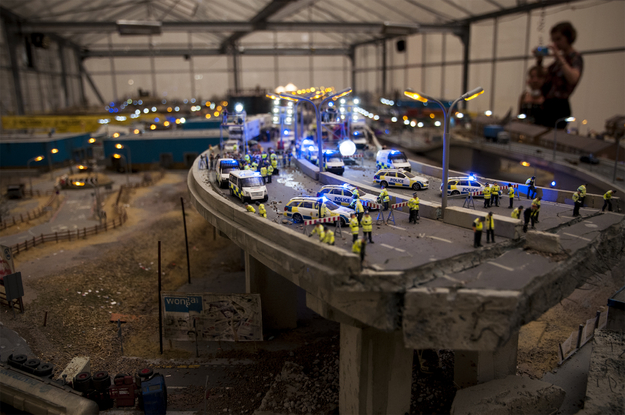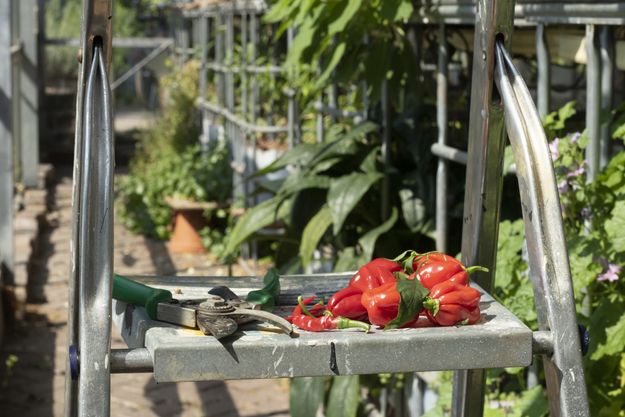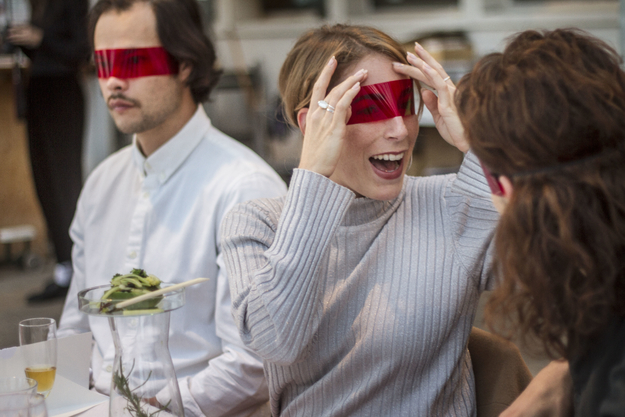The first greenhouses at Mediamatic.
Mediamatic is a nomadic institute, meaning it is not attached to one place. From 2011 to 2014 we were located in an old warehouse: The Van Gendthallen. On this location, we placed our first two big greenhouses as part of the exhibition space.




The Aquaponic System
In 2014 we started to build an aquaponic system in one of the greenhouses. Aquaponics is a sustainable food production system that combines the cultivation of vegetables and fish. It is one of the best ways to produce food in the city, because it hardly takes up any space
When we moved to our current location: The Biotoop, the aquaponic greenhouse moved with us. Here it transformed into a serious urban oase in which we conduct research into the urban farming system, and grow herbs and vegetables that we use in our restaurant.
greenhouse - aquaponics greenhouse with small aquaponics system

Collection of harvested exotic peppers at Aquaponics greenhouse -


Spectrum Crops
In 2017 Diana Scherer researched into the impact of color on certain plants. For the occasion we built five small houses, each with different colored glass, on the waterside of our building.


Fashion Machine Project
With the Fashion Machine Project in 2017, activist designer Conny Groenewegen wanted to draw attention to the large amount of waste produced in the fast fashion industry. As a part of this project, she covered our complete building in fleece sweaters and organised a trash-fashion performance. The colored greenhouses were the decor of the show.
Virus Free Plants
One year later, the greenhouses served as a lab and exhibition space for artist Pei-Ying Lin. In her project 'The Secret Life of Plants' she researched into the impact of the surrounding on plants. She looked at the impact of viruses on plants and also experimented with music to see if/how sound affects plants.
Diadromí
In 2019 the houses were transformed for the installation Diadromí by artist Heleen Blanken. Every house depicts and draws attention to a certain miracle that is part of the earth's ecosystem, like the precious metals. The installation emphasises the fragility of the system and comments on the relation between humans and nature.
Close-up of Diadromi depicting different parts of nature, in this case precious metals -


Neo Futurist Dinners
Since 2018 we have been experimenting with food and forms of eating in a series of Neo Futurist Dinners. In each edition we invite an artist and chef to present their vision on the future of food.
The Chromatic Dinner
Based on Kandinsky's Klangfarben and the Chinese Five elements, Artist Martin Butler and vegan chef Alexander Gershberg present a wholesome and harmonious eating experience. Each course is designed in a different color. As such, color, smell, texture, sound and taste all mixed in this cross-Atlantic recap of this fully immersive dinner.
This Neo-Futurist Dinner was also presented at Seattle Design Week in 2018
Synesthetic dining during the white course from Chromatic Dinner - 

The Beauty Dinner
The Beauty Dinner explored the relationship between skin and gastronomy in 8 courses. artists Margherita Soldati, Krisztina Czika and Chef Alice Héron created dishes that could be applied to the skin as well as to be eaten. The idea was to eat, play and be pampered in a culinary beauty salon.
Fruit leather is applied to delicate parts of the face and becomes part of course 6 -
Smearing the spinach pesto all over the face - Course 5 - Nourishing -


A la Mano
Italian food designer Giulia Soldati and chef Tommaso Buresti presented a culinary experience that extends taste to touch and that explores new food interactions. No cutlery and plates were involved, instead, the food had to be eaten by hand. The traditional way of perceiving food is replaced by a new sensorial celebration of the action of eating, twirling spaghetti and breaking thin pastry with the fingers.


If you want to know more about the Neo Futurist Dinners and read about previous editions, please have a look here.






